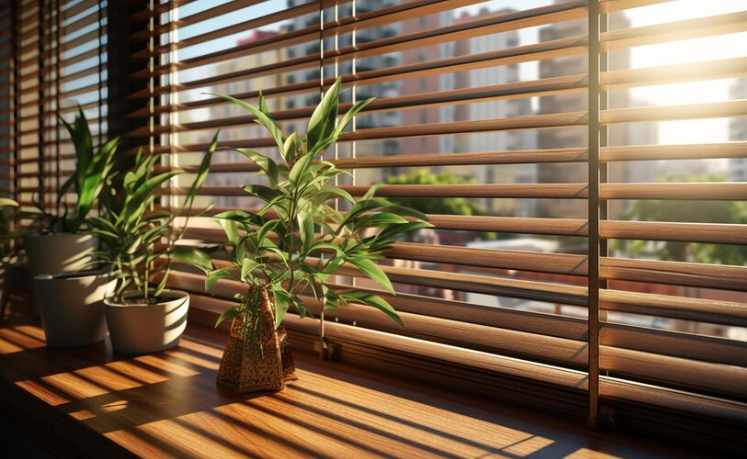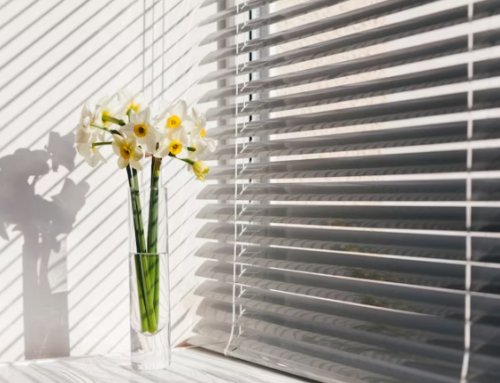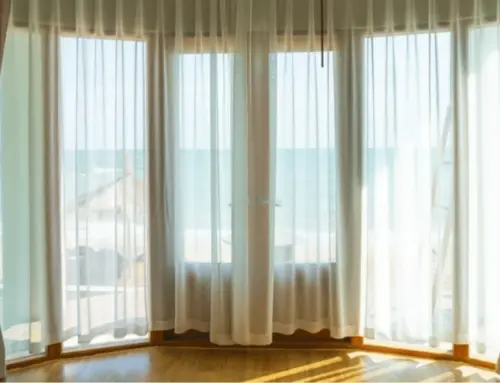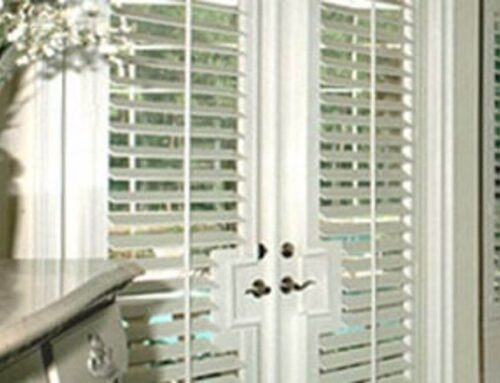You know that feeling when you walk up to a house and it just looks right? A lot of that comes from something most people don’t even notice at first—window treatments. It’s those clean shades, cozy curtains, or neatly hung blinds that pull everything together. They’re not flashy, but they give the place a finished, lived-in feel.
From the outside, they show that someone cares about the space. From the inside, they affect how light flows through each room, how private it feels, and even the mood. Window treatments are one of those quiet details that make a home feel complete without trying too hard.
How do window treatments affect the mood of a home interior?
Window treatments significantly influence the mood of a home interior by influencing light, color, texture, and the overall sense of space. How natural light is filtered—or blocked—through curtains, shades, or shutters can instantly change how a room feels.
Soft, sheer drapes might create a calming, airy atmosphere, while bold, heavy curtains add drama and intimacy. Plantation shutters, with their clean lines and adjustable louvers, offer a structured elegance that can feel both refined and serene.
Color and material choices also impact emotional tone. Neutral tones in linen or cotton bring warmth and relaxation, while metallic finishes or rich fabrics like velvet convey luxury and sophistication.
Beyond aesthetics, window treatments affect acoustics and temperature, contributing to comfort and functionality—two key ingredients in creating a space that feels just right. In short, window treatments are more than décor—they’re emotional cues that guide how we feel in a space, from energized and open to cozy and grounded.
Can the choice of window coverings change how guests perceive a space?
Absolutely—window coverings can significantly influence how guests perceive a space. Window treatments are often one of the first visual elements people notice when entering a room, even if subconsciously.
Sleek, well-fitted coverings like plantation shutters or custom Roman shades suggest a curated, high-end environment, signaling taste, attention to detail, and investment in quality. In contrast, dated, ill-fitting, or worn-out treatments can make a space feel neglected, cluttered, or less refined.
The style, material, and color of window coverings also help set the tone of a room—light and airy treatments can make a space feel open and welcoming, while dark, heavy drapes may create a sense of intimacy or formality. The right choice can enhance natural light, highlight architectural features, and tie together the overall design.
Ultimately, window coverings aren’t just practical—they’re an essential part of a home’s visual language, subtly shaping how guests experience and remember the space.
Why do designers consider window treatments a core part of home ambiance?
Designers consider window treatments a core part of home ambiance because they influence how a room looks, feels, and functions while tying together the overall aesthetic. More than just a finishing touch, they’re essential to setting the tone and atmosphere of a space. Here’s why they matter so much:
- Light Control: Window treatments manage how natural light enters a room, helping to create the desired mood—from soft and relaxing to bright and energizing.
- Privacy and Comfort: They provide a layer of seclusion and coziness, contributing to a room’s emotional feel and functionality.
- Style Cohesion: The color, fabric, and style of window treatments anchor the room’s design, complementing furnishings and décor for a polished, unified look.
- Texture and Depth: From flowing linen curtains to structured shutters, window treatments add tactile interest and visual layers that enhance ambiance.
- Energy Efficiency and Acoustics: High-quality coverings can improve insulation and dampen sound, making a space more serene and comfortable.
Because they influence light, privacy, style, and comfort, designers treat window treatments as essential design elements—not accessories. They help transform four walls into a thoughtfully curated, livable space that feels intentional and inviting.
What role do window treatments play in setting architectural tone?
Window treatments play a vital role in setting the architectural tone of a home, acting as both functional and stylistic extensions of the overall design. Far beyond decoration, they can enhance structural elements, reinforce design themes, and balance the room’s proportions. Here’s how they influence architectural tone:
- Frame the Space: Well-designed window treatments help define the shape and scale of windows, framing views and emphasizing architectural symmetry or focal points.
- Enhance Design Styles: Minimalist roller shades work seamlessly in modern architecture, while elegant drapes or plantation shutters suit traditional and transitional homes—reinforcing the intended style.
- Create Visual Height or Width: Floor-to-ceiling curtains can make ceilings appear taller, while wide-set drapery rods can expand the sense of width in a room, shaping spatial perception.
- Support Architectural Balance: Treatments can soften hard lines or add structure to open spaces, helping balance heavy architectural features like exposed beams or stone walls.
- Contribute to Permanence: Custom shutters or tailored Roman shades offer a built-in architectural feel that suggests permanence and craftsmanship, aligning with high-end design.
Window treatments are an architectural tool. When thoughtfully chosen, they help reinforce a space’s bones, complementing its structure while enhancing its personality.
Make a Lasting Impression—Start with Stylish Window Treatments!
Our expertly crafted solutions, from elegant plantation shutters to sleek shades, do more than cover windows—they define the entire tone of your home. Thoughtfully chosen window treatments enhance natural light, create privacy, and add a polished finish that speaks to your style.
Whether your space is modern, traditional, or somewhere in between, we offer custom designs that elevate every room. Let The Blind Man help you make your home as impressive as it is inviting—schedule your consultation today!





